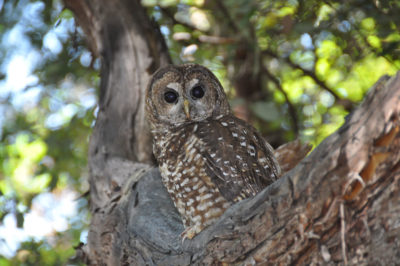Wildlife species in remote areas of California, such as barred owls and threatened northern spotted owls, are being exposed to high levels of rat poison. Scientists say the toxin is most likely coming from thousands of illegal marijuana farms deep within the state’s northwestern forests that use the poison to keep rodents away from irrigation systems and crops.
A team of scientists led by researchers at the University of California, Davis sampled raptors at the intersection of California’s Humboldt, Mendocino, and Del Norte counties — an area known as the Emerald Triangle that is one of the world’s largest producers of cannabis. Scientists had previously discovered rat poison in a large portion of the region’s fishers, a weasel-like animal, and wanted to see if birds of prey were also being impacted.
The scientists found that 70 percent of the northern spotted owls they sampled, and 40 percent of barred owls, had been exposed to anticoagulant rodenticides, more commonly referred to as rat poison. The findings were published in the journal Avian Conservation and Ecology.
Scientists worry that California’s Proposition 64, which legalizes recreational marijuana in the state and took effect this month, could lead to an increase in the number and size of unpermitted pot farms in the region, resulting in even more poisoning of wildlife.
“When you have thousands of unpermitted grows and only a handful of biologists that regulate that for multiple counties, we’re deeply concerned that there aren’t sufficient conservation protective measures in place,” the study’s lead author Mourad Gabriel, an ecologist at UC Davis, said in a statement. “If no one is investigating the level at which private marijuana cultivators are placing chemicals out there, the fragmented forest landscapes created by these sites can serve as source points of exposure for owls and other wildlife.”
